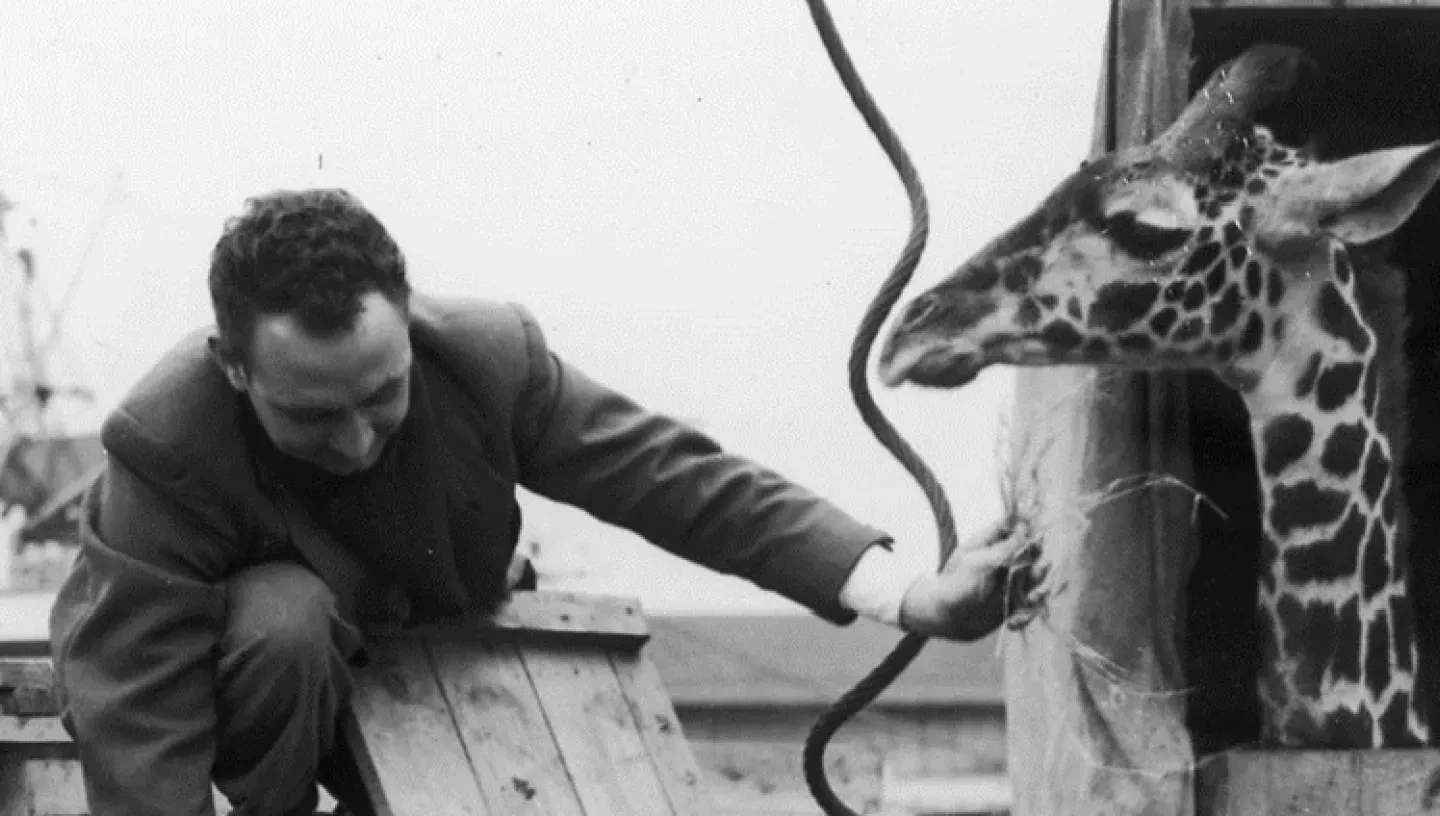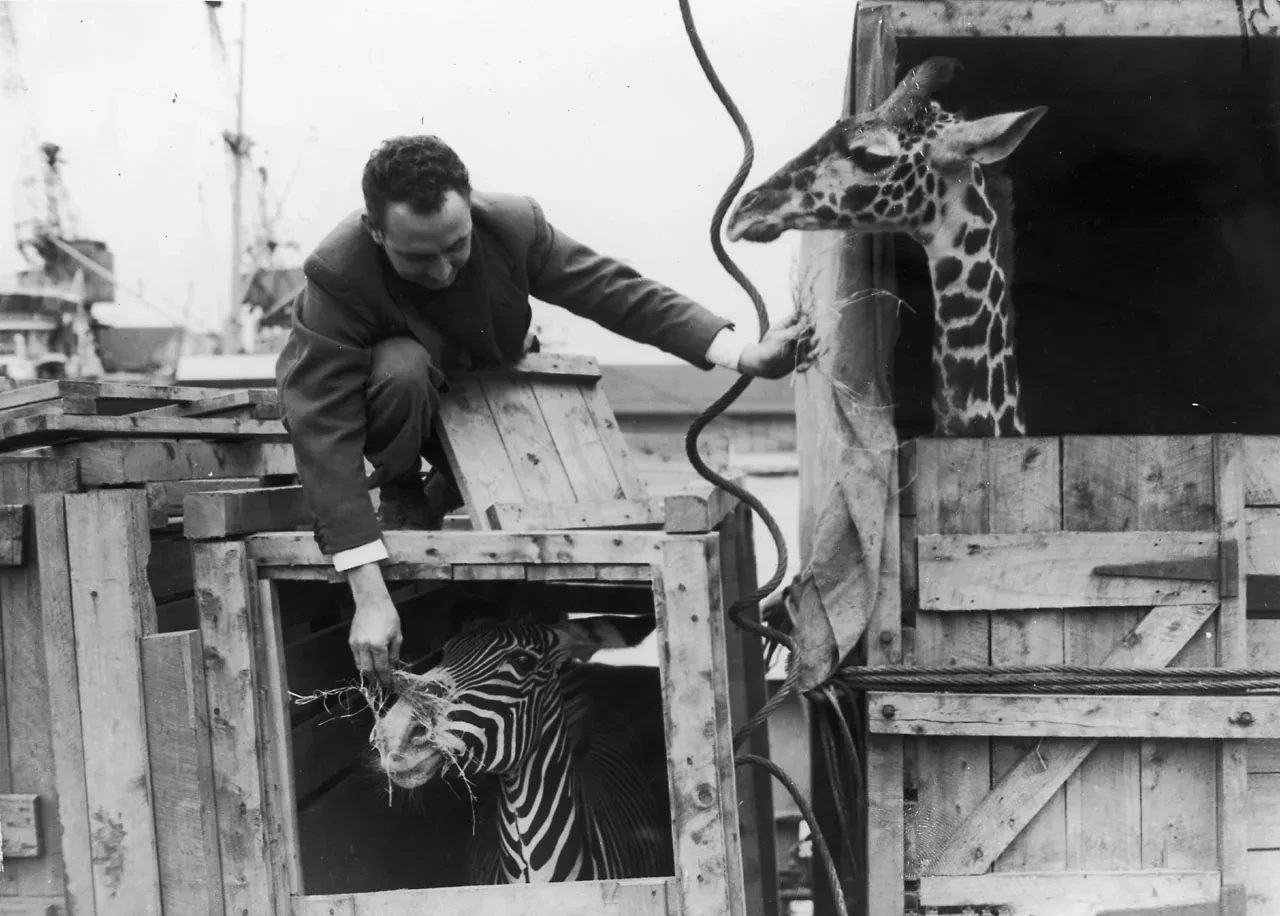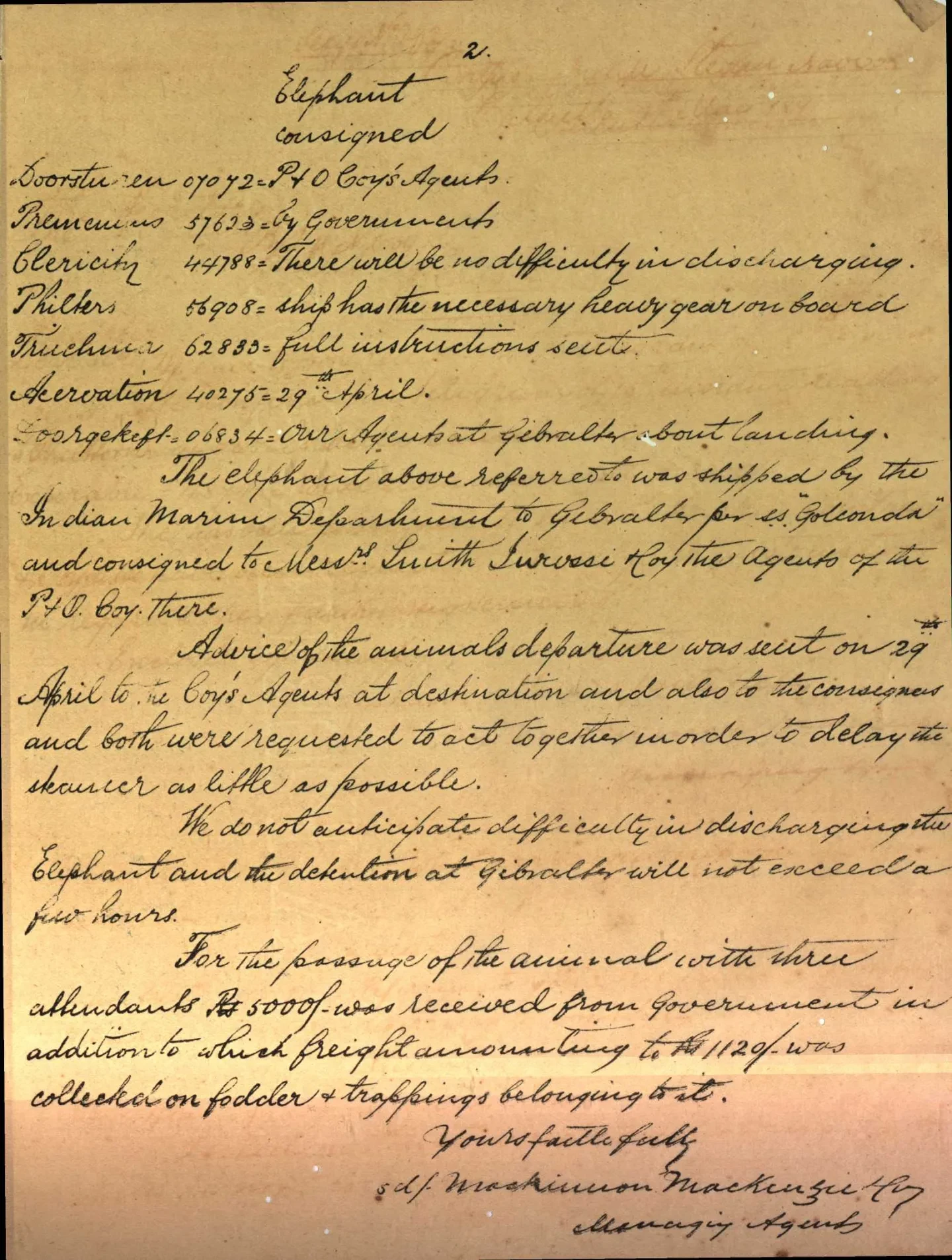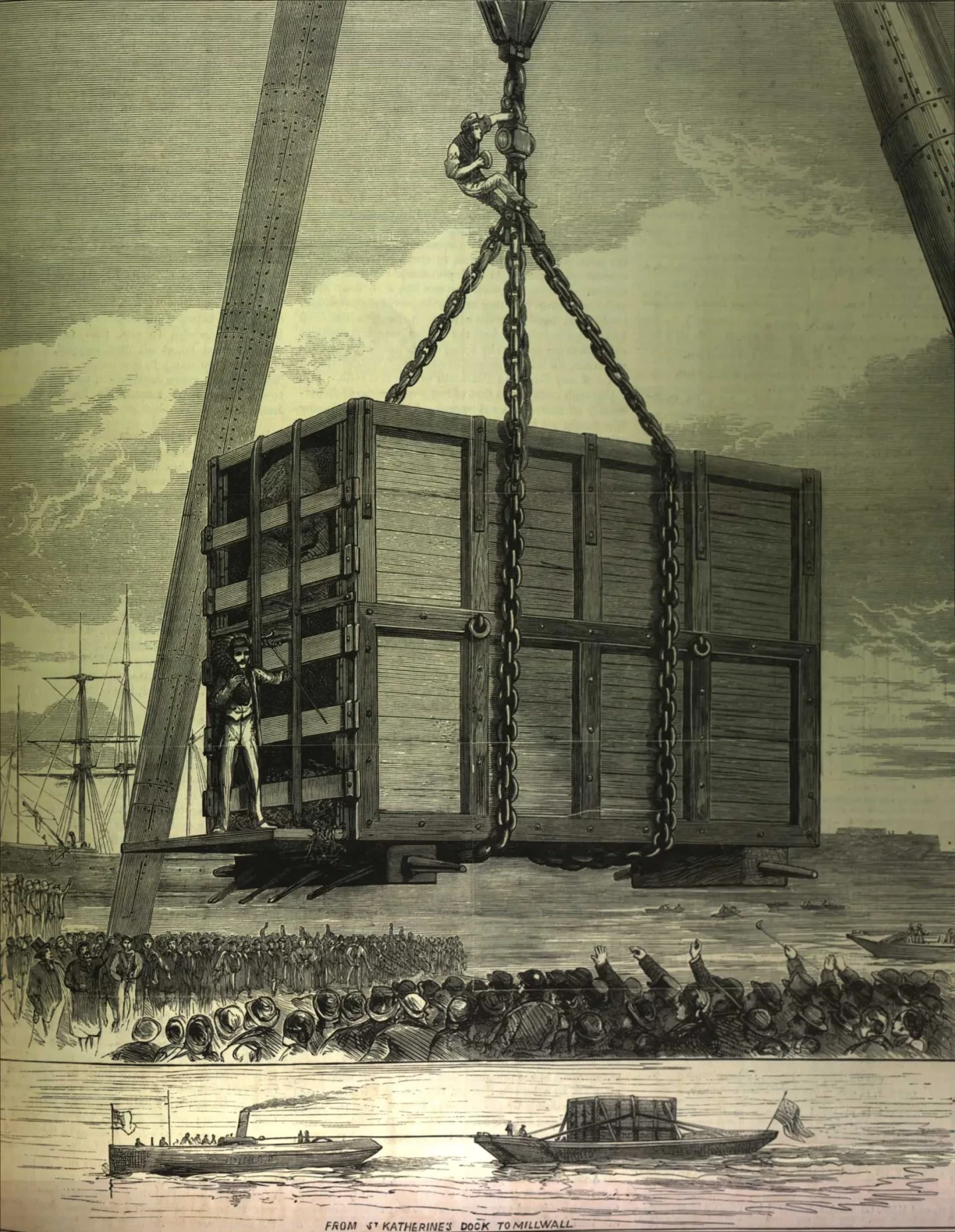
Exotic animals have a long history in Britain. The Royal menagerie at the Tower of London was probably created in 1204 (during the reign of King John). There was an aviary at Greenwich Palace constructed for Queen Anne, which probably included both native and exotic birds, and there were other Royal menageries at Windsor, Richmond Lodge and Kew.
By Stawell Heard, Librarian, Acquisitions and Cataloguing
At this time exotic animals obviously arrived in Britain by sea, sailing in both Royal Navy and merchant ships. Some animals were traded, coming from the Empire (or beyond), others were gifts from foreign rulers – such as Britain’s first giraffe, which arrived on the ship Penelope in 1827 as a gift to King George IV from the Viceroy of Egypt.
The Dutch East India Company imported animals from the Far East and, during the 17th and 18th centuries, its British counterpart, the Honourable East India Company, imported Indian birds such as parrots, mynah birds and parakeets. These could command large prices. Birds brought to London from the Netherlands tended to sail from Rotterdam.
Purveyors of exotic beasts
In Victorian times, possibly the best known dealer in exotic animals was Charles Jamrach, who had various premises including a shop in the East End of London (conveniently near the docks) at 179-180 St George Street East. The Illustrated London News (ILN) described what it called this ‘singular establishment’ in its issue of 19 February 1887, at which time (in addition to the shop) the menagerie occupied some ground-floor and upstairs rooms in Britten’s Court. The depression and the war in Sudan meant that Jamrach had a smaller stock than usual, but even so the ILN listed ‘two fierce Indian tigers, in dens strongly barred; a fine mouflon ram, from North Africa; a llama, from South America; a black jaguar; a rare variety of tapir, with long hair, the only specimen brought to England; a pair of the Indian ibex, the male a very fine animal; a small gazelle, an Arctic black fox, a serbal [serval?], a few monkeys …’ and more besides.

Menageries and mayhem
The transportation of exotic animals could be problematic and even, on occasions, dangerous. In 1857 a Bengal tiger was among a consignment of animals, including leopards, en route to Jamrach’s from the London docks. Whilst the leopards were being unloaded in Betts Street, the tiger managed to break out of his cage and grab a nine-year-old boy called John Wade. Jamrach and one of his men, armed with a crowbar, went to intervene and subdued the tiger so that he headed inside a den by the yard, where two of Jamrach’s men locked him inside. Remarkably, the boy was shocked but unharmed.
The tiger was bought by Wombwell’s, one of the travelling menageries which toured the country giving Britons a chance to see exotic animals in the flesh.
The business records for the British India Steam Navigation Company (finding reference BIS) are on loan to the Caird Library and Archive from P&O Heritage. These records reveal stories of other exotic animals transported by sea. In one of the files (BIS/37/2) there is a transcript of a speech given by one of the directors at a centenary dinner in 1956, which recounts stories of two of them. The first is that of a tiger which escaped from
its cage and in its excitement fell through the skylight into the engine room. The Engineer on watch was so astonished that for a few moments his usual quickness of mind deserted him, and then he thought the wisest and safest place was in the tunnel to which he fled, and closed the water-tight doors. But, so history relates, to his chagrin and dismay the tiger had reached the tunnel first.
The second is the story of
a young bear being shipped from India to Australia, [who] broke loose one early morning, and being of a friendly disposition and of an enquiring type of mind, he thought he would like to visit the officers’ quarters. He entered the cabin of a cadet who was fast asleep and, having sampled the soap and some tooth-paste, decided to join the cadet in his bunk. It was the worst nightmare the lad ever had, and the language so shocked this friendly bear that he was easily coaxed back to his pen.
Another BIS file (BIS/6/110) records the transporting of an elephant onward from Gibraltar on the SS Golconda in 1891 and the efforts the company made to minimise the transfer time:

'Advice of the animals [sic] departure was sent on 29th April to the [P&O] Coy’s [Company’s] Agents at destination and also to the consigners and both were requested to act together in order to delay the steamer as little as possible.
We do not anticipate difficulty in discharging the elephant and the detention at Gibraltar will not exceed a few hours.'
Jumbo the elephant crosses the Atlantic
Another elephant, London Zoo’s African male Jumbo, crossed the Atlantic in 1882. Jumbo was one of London Zoo’s celebrity animals. He had arrived at the zoo on 26 June 1865 when only four feet tall, but had grown to over eleven feet by 1881, making him the tallest elephant in captivity. Popular with the zoo’s visitors, to whom he gave rides, he had become at times unmanageable and dangerous, possibly owing to the onset of musth, possibly from ill-health. The American showman Phineas T Barnum bought him for £2000 in 1882 – much to the outrage of the British press – and arrangements were made to ship Jumbo to America.
Jumbo, however, had other ideas. The ILN reported on 25 February 1882, that a large box, ‘like a packing-case made of thick planks’, had been placed outside the zoo’s elephant house to transport Jumbo to the docks and onto the ship for the Atlantic crossing. Jumbo, in chains, was walked to the box, but refused to enter it. Early the following morning, he was led out again, this time with the intention of being walked to the docks, but when not quite at the road, Jumbo stopped, kneeled to his keeper and lay down on his side. Again, the proceedings had to be abandoned.
A further attempt the following month was successful at getting Jumbo inside the box and he was conveyed by dray horses through the London streets to St Katherine’s Dock and onto the ship Assyrian Monarch. On 1 April the ILN reported:
At St. Katherine’s Docks, the box, with the elephant in it, was hoisted by a steam-crane or “derrick” on board a barge, which conveyed it down the river to Millwall. Here, on Thursday afternoon, it was lifted from the barge … and was placed on a quay or landing-stage of the docks, where it remained till Friday.

The ILN reported that the food on board for Jumbo’s crossing consisted of ‘two tons of hay, three sacks of oats, two of biscuits, and one of onions, a delicacy of which Jumbo is exceedingly fond.’ The bar in front of Jumbo, on which he kept rubbing his trunk, was to ‘be covered in rolls of canvas’. The ship sailed at five in the morning.
Jumbo arrived in America safely, but the voyage had a sad sequel. On 15 September 1885, whilst crossing a railway line at St Thomas, Ontario, Jumbo was hit by a train and died shortly afterwards.